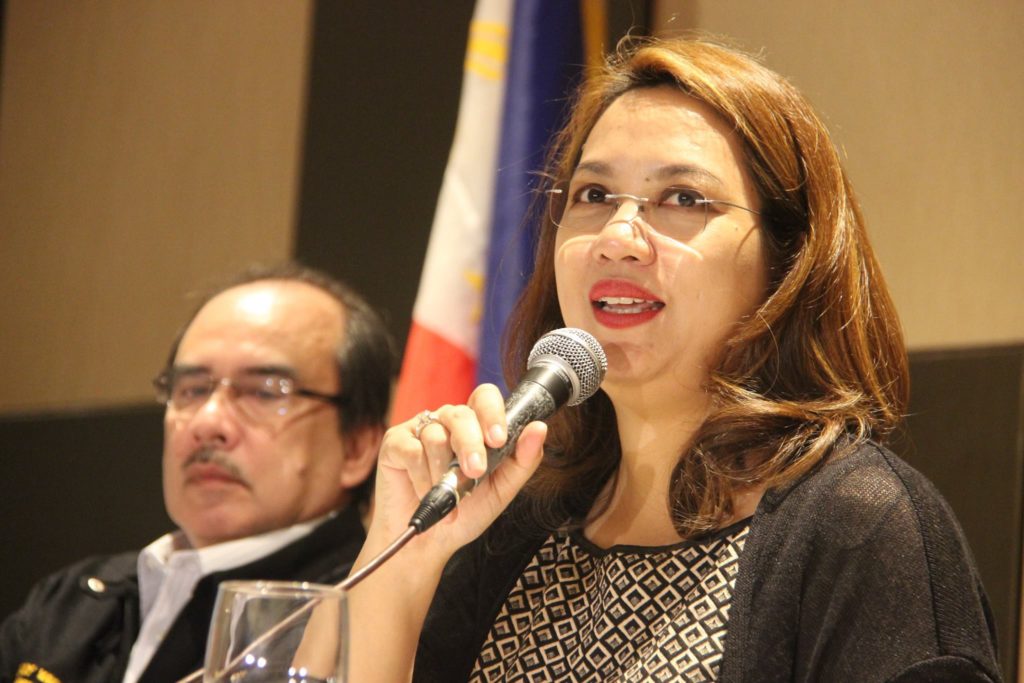
MANILA – The Department of Health (DOH) has said that efforts on establishing cancer centers in more hospitals to address the need for accessible and quality radiation therapy services, especially in provinces away from Metro Manila, will soon be felt by the public.
“These will help ensure access to radiation therapy for our cancer-stricken patients, especially those who live far from Metro Manila,” Health Secretary Janette L. Garin said in a press briefing.
She explained that the installation of cancer treatment centers is part of the answer for the long and pressing appeal of cancer patients who have difficulties in undergoing the treatment as therapy session requires them to travel to Metro Manila where cancer treatment centers have initially been made available in the past years.
Under the program, recipient hospitals will have a linear accelerator, treatment planning system, CT simulator, and brachytherapy units.
The cancer treatment centers will be strategically located in the following areas: Southern Philippines Medical Center (Davao City); Cagayan Valley Medical Center (Tuguegarao City, Cagayan); Baguio General Hospital and Medical Center; Bicol Medical Center (Naga City, Camarines Sur); Zamboanga City Medical Center; Lung Center of the Philippines (Quezon City); and Vicente Sotto Memorial Medical Center (Cebu City).
Preparation of installations are currently being made in the said hospitals, Secretary Garin said.
She added that for regions which will not be having the cancer treatment centers this year, they have included them in the proposal for General Appropriations Act of 2017.
“Our target is to have at least one (cancer treatment center) per region so that those in the provinces need not travel far and suffer difficulties as there are sessions that will be repeated in the course of therapy,” the Health Chief said.
A linear accelerator is used for external beam therapy, wherein customized high energy X-rays conforming to a tumor’s shape are produced for destroying cancer cells while avoiding damaging surrounding normal tissues.
A brachytherapy unit is used for internal beam therapy, wherein a protected radiation source is placed directly within or near the tumor site.
In both instances, since radiation is focused on the tumor without damaging healthy tissues, the treatment outcome is significantly improved compared to other treatment modalities for cancer.
Secretary Garin said the operations of the equipment can be sustained by reimbursements from the radiotherapy and Z Benefits Package of the Philippine Health Insurance Corporation (PhilHealth).
At present, PhilHealth has the following benefit packages which can be availed of for radiation therapy: radiotherapy (P3,000/session); chemoradiation with cobalt and brachytherapy (low dose) for cervical cancer stage IA1, IA2, IIA1 (P120,000/case); chemoradiation with linear accelerator and brachytherapy (high dose) for cervical cancer (P175,000/case); radiotherapy using linear accelerator for rectal cancer stage II-III (P400,000/ case); radiation therapy for breast cancer stage 0 to III-A (P100,000/case); and low to intermediate risk prostate cancer (P100,000/case).
PhilHealth Sponsored Program members, including indigents identified by the Department of Social Welfare and Development’s (DSWD) National Household Targeting System for Poverty Reduction (NHTS-PR), are entitled to no-balance billing (no co-payment) when they avail of these services.
“Cancer is an illness that can cause not only physical havoc, but also financial catastrophe for the patients and their loved ones. These investments in cancer care will allow more of our people, especially the poor, to experience accessible, affordable, and quality care, consistent with Kalusugan Pangkalahatan,” Garin said.
She further said that what is good with the cancer treatment centers is that the equipment basically targets the cancer cells that are damaging while protecting the normal cells.
“At ang kagandahan nito is iyung tumor cells will be hit precisely. You don’t hit the normal cells. So that’s actually good news for cancer patients,” she pointed out.
Given the fact that cancer is one of the top causes of death and sickness in the country, she pointed out that early diagnosis is important, as early detection is the best action to do in preventing an illness from getting into a serious and wrecking serious effects and damage.
“The earlier it is detected, the more effective the cancer treatment will be,” she stressed.